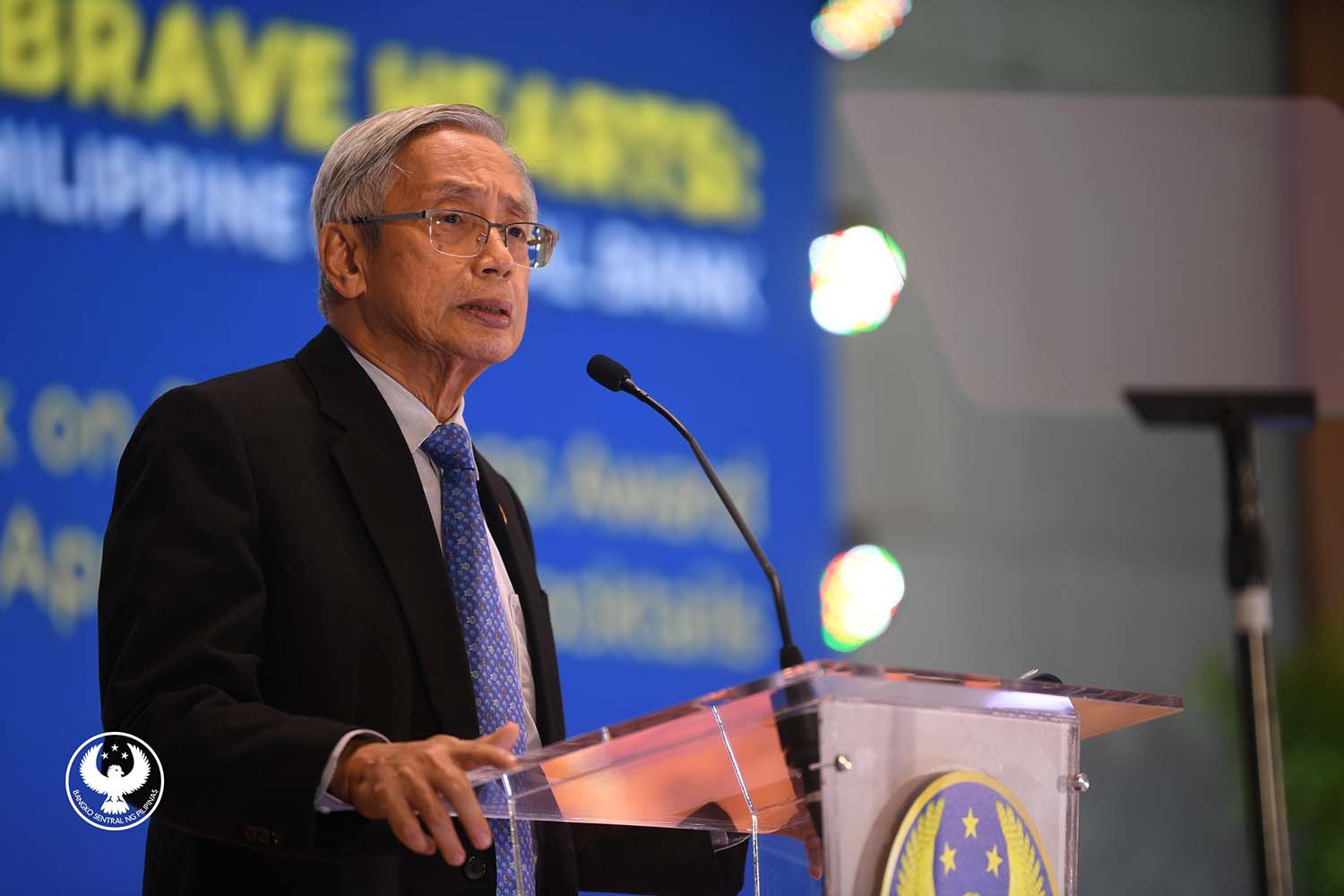
The Bangko Sentral ng Pilipinas (BSP) is advocating what it called sustainable central banking strategies to aid in mobilizing efforts that will address environment, social and governance issues.
The BSP said it will follow a three-phase, 11-point strategy on increasing awareness within the organization on sustainability concepts and apply these on its policy mandate as a regulator of the country’s banking system.
“We [the Philippines] are a victim. We are very small in terms of [global greenhouse gas] emissions, and we are late in contributing to emissions. Sabi nga eh, small na, late pa, pero kasama [sa apektado],” BSP Governor Felipe Medalla said.
“Now, of course, my answer always has been that: we will be affected. Indeed, all those estimates of vulnerability and damage, we are usually in the orange to the red color in the heat maps. For instance, climate change could very obviously affect food supply,” he said.
This, he said, could lead to large supply shocks, supply-driven inflation. The country has to know how to prevent what economists call second-order effects, how supply-shock inflation can become more permanent inflation depending on what the central bank does.
“The other point is that, clearly, it [climate change] will affect how we regulate banks because capitalization requirements should be commensurate to the risks.
The more risky [your activities] are, the more capital you have to put up. And, clearly, climate change will add to the risks,” he said.
“So, in other words, even just from the point of view of our standard regulatory approach, we have to make some modifications on how we define credit risk, default risk and all the financial risks that regulated entities face. So, clearly, the regulatory side has to make more adjustments,” he added.
Over the course of the program, the BSP’s first action is that it will initiate discussions with key government agencies on the conduct of a comprehensive vulnerability assessment, where all sources of climate- and environment-related vulnerability for the Philippine macroeconomy, the financial system and public finances are systematically assessed.
“Such vulnerability assessment will comprise a scenario analysis of climate and socioeconomic change and address both physical and transition risks. It will consider both short-term and long-term risks, including those traditionally beyond the horizon of the BSP. This may be undertaken through the support of the development partners,” the BSP said.
BSP Deputy Governor Chuchi Fonacier said besides being sound and stable, the central bank aims to have banks and financial institutions that are mindful of the environment and the pressing issues and threats of climate change to price and financial stability.
“Walking the talk, the BSP is also committed to serve as a role model for our regulated entities,” she said.
“As an enabler [in advocating sustainability throughout the financial system], the BSP aims to provide a conducive policy and regulatory environment that enables its supervised entities to take a balanced and proportionate approach in embracing sustainability principles and promoting sustainable finance. As a mobilizer, the BSP leads and shapes the financial institutions’ behavior toward making sustainable investment decisions. As a doer, the BSP adopts the same standards that are set for supervised financial institutions,” Fonacier said.
Medalla, however, said the BSP can only do so much about the environmental issues.
“That is why we call on everyone’s support to help implement the Sustainable Central Banking program and, of course, the rest of society outside central banking must contribute as well. Clearly, what the national government does will dwarf anything that the central bank can do,” he said.
Image credits: Bangko Sentral ng Pilipinas
